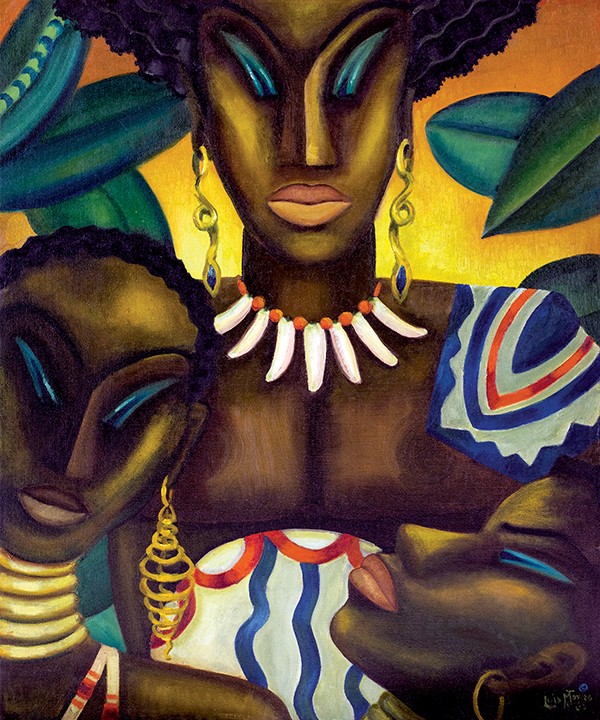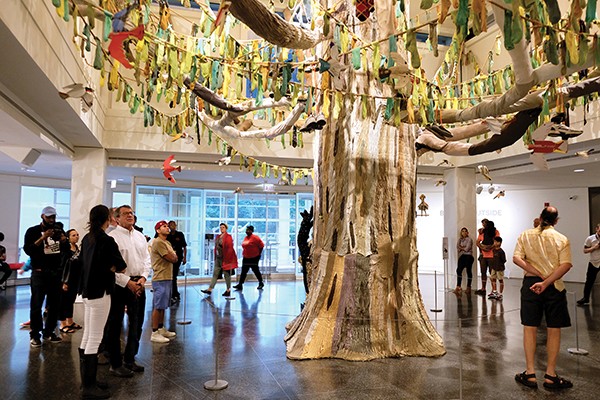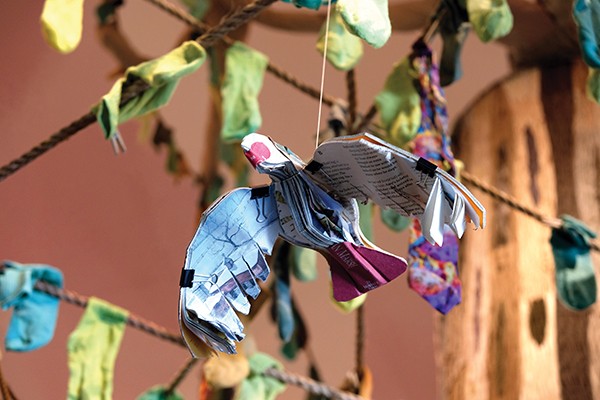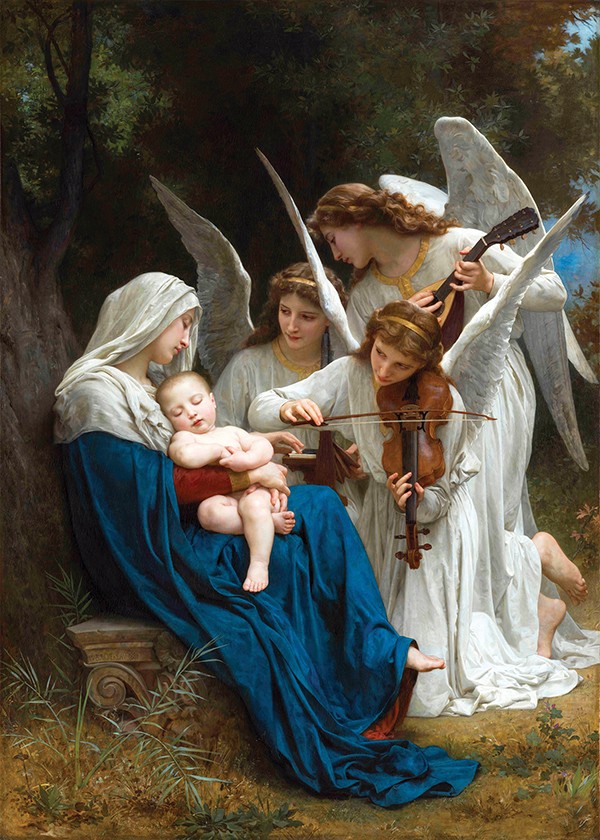There’s no turning back now. The decade’s in the rearview, and our eyes are set on what’s to come in 2020 — in politics, sports, film, music, and more. Happy New Year, Memphis!
CannaBeat
Medical cannabis died in Tennessee in April. Well, a bill that would have allowed it did anyway.
But the sponsor of that bill, Sen. Steve Dickerson (R-Nashville), told The Daily Memphian in June that he intended to bring the bill back to the Tennessee General Assembly in 2020. The strategy to pass it may change, he said. He and House sponsor Rep. Bryan Terry (R-Murfreesboro) plan to reroute the bill through the legislative process, avoiding committees with members unfriendly to medical cannabis.
Terry, chairman of the House Health committee, issued a formal invitation to actor Michael J. Fox in December to appear before the committee during the 2020 session to talk about his foundation’s work to support expanding research on medical cannabis.
A September poll of influential Tennesseans found that many across the state were in favor of loosening cannabis laws. “In Memphis and Nashville, clear majorities favor making it completely legal for both medicinal and recreational use [57 percent and 58 percent respectively],” according to the Power Poll. About 29 percent of those polled in Memphis thought cannabis should be legal for medical purposes. Only 15 percent thought it should not be legalized at all.
There will be one major change for the possibility of cannabis legislation in 2020. In November, the U.S. House Judiciary Committee approved a bill that would legalize marijuana on the federal level. — Toby Sells
Gaydar
When lawmakers return to Nashville in 2020, they’ll also consider a slate of bills against the LGBTQ+ community called the “Slate of Hate” by the Tennessee Equality Project (TEP).
The recurring anti-transgender student bathroom bill would give state legal support to public school districts that experiment with anti-transgender student policies. An adoption discrimination bill would make private adoption/foster care agencies eligible for tax dollars, even if those agencies decide to turn away potential parents because of their sexual orientation, gender identity, or religious views.
A business license bill would prevent local governments from favoring businesses with inclusive policies in their contracting. The so-called “God-Given Marriage Initiative” may emerge here in 2020. It would end marriage licensing and replace it with a man and a woman registering their marriage contract with the state. — TS
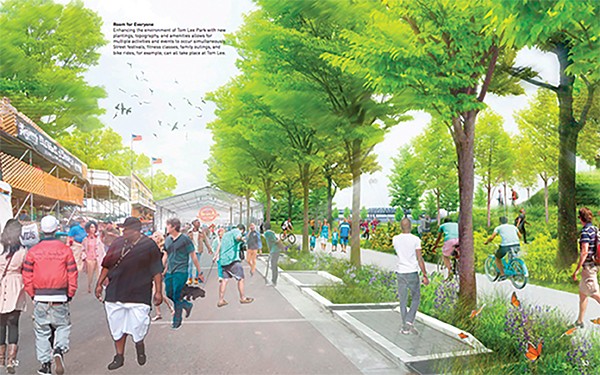
A rendering of the MRPP-helmed redesign of Tom Lee Park
Memphis in May/ Tom Lee Park
The sounds of music and the smell of barbecue will again rise from Tom Lee Park in May 2020.
It’s one stipulation of the mediation between the Memphis River Parks Partnership (MRPP) and Memphis in May International Festival (MIM). The mediation ended in December, closing months of talks between the two groups over a redesign of the park proposed by MRPP in February. MIM officials feared the new design would not allow enough space for its festivals in the park.
The festivals will be moved to another location in 2021, however. Tom Lee will close after the festivals in 2020 for the construction of the park’s many new features. — TS
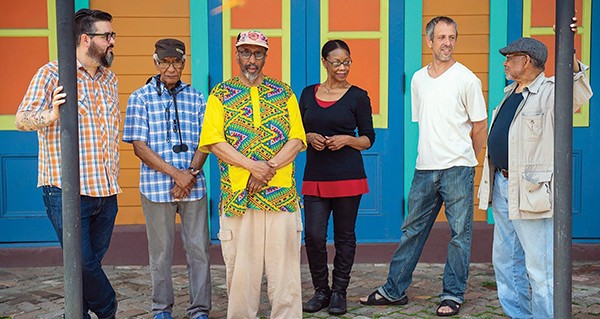 Marc Pegan
Marc Pegan
Avant-garde jazz ensemble The Dopolarians
Music
Shopping around for a New Year’s resolution? Here’s one that will have a ripple effect: Get out to see more live music. Compared to the late 20th century, this is a veritable Golden Age of venues and performers for Memphis. And the list keeps growing.
Consider New Year’s Eve at what may be both the newest and the oldest club in town, Hernando’s Hide-A-Way. Co-owner Dale Watson and his Lone Stars often hold court there, as they will on the last night of the year, recording a live album to boot. But there are plenty of other national acts already taking advantage of this mid-sized venue, intimate yet spacious, swanky yet country.
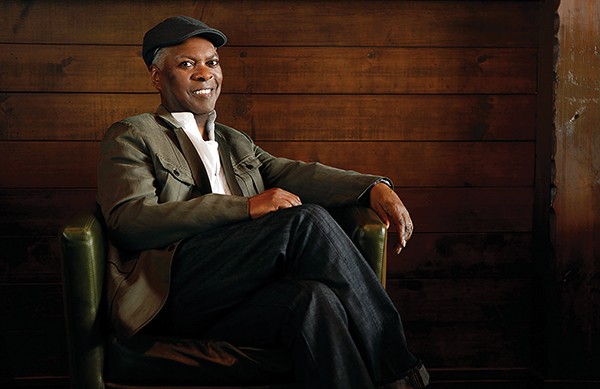 Piper Ferguso
Piper Ferguso
Booker T. Jones
If 2019 was the year that Crosstown Theater reached cruising altitude and the Green Room at Crosstown really came into its own, the year to come looks to continue that upswing. At the former space, January 18th will witness a homecoming show of sorts for the great Booker T. Jones. Those who saw him speak at Stax in November got a taste of his new album; now Memphians can hear that album and more, live and in the moment. As a perfect contrast, acclaimed avant-garde jazz ensemble The Dopolarians, boasting two Memphis-associated players and some elder legends of the genre, will play the Green Room on February 7th.
In the classical realm, watch for the remainder of the Iris Orchestra’s season at both GPAC and the Brooks Museum, starting with their performance of “Spoonfuls,” pianist Conrad Tao’s new work in honor of Memphis’ bicentennial, on January 25th. Meanwhile at the Cannon Center, the Memphis Symphony Orchestra will feature Shostakovich, Stravinsky, and a Marimba Concerto by Abe, among other works, as they continue their season from January through April.
The city’s newest club, The Lounge at 3rd & Court, promises to be the jazz viper den that many in the city have longed for, often featuring guitar great Joe Restivo and band. And then there are the unsurpassed standby clubs for rock, country, and jazz, which continue to feature original music: Bar DKDC, Lafayette’s Music Room, Wild Bill’s, B-Side, Hi Tone, Minglewood Hall, Murphy’s, Lamplighter, Blue Monkey, and many others, including the ever-reliable Beale Street. Get out there and keep it alive! — Alex Greene
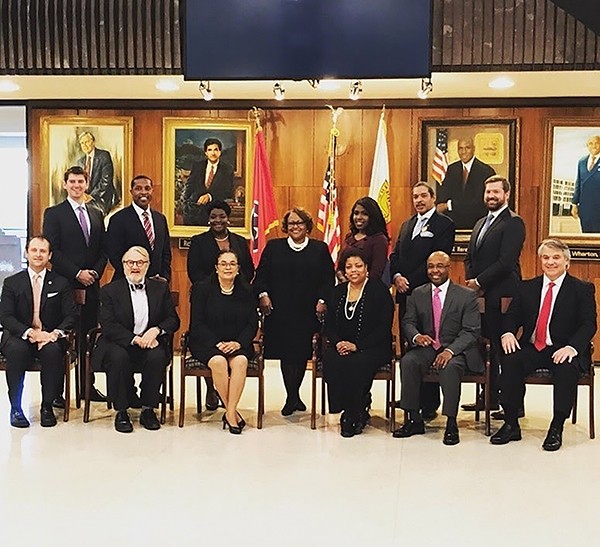
The Memphis City Council moves into 2020 with six new members
City Council
The Memphis City Council will move into 2020 with six new members. This is the first time five African-American women will sit on the council together. Councilwoman Patrice Robsinson will chair the group in 2020, with Frank Colvett Jr. serving as vice chairman.
Jeff Warren, Rhonda Logan, Chase Carlisle, Edmund Ford Sr., Michalyn Easter-Thomas, and J.B. Smiley Jr. will join the council next year.
“We’re going to make a better Memphis as a team,” Robinson said of the new council.
After approving Memphis Light, Gas and Water (MLGW) rate hikes for water and gas at its last meeting of the year, the council will return to the issue of electric rate hikes in 2020. Beginning in July, MLGW customers’ bills will go up $2.23 if no rate increase is approved for electric.
MLGW proposed increasing electric rates by a total of $9 for the average customer. The council voted this move down, prompting the MLGW board to reconsider their proposal. The council will consider MLGW’s new proposed increase once the utility’s board comes up with the new numbers. — Maya Smith
Bikes
Next year the city is slated to add about 20 miles of new bike facilities, says Nicholas Oyler, the city’s bikeway and pedestrian program manager. One new bike facility will be the completion of the Hampline in early 2020. This is a project nine years in the making that will connect the Shelby Farms Greenline to Overton Park.
In other bike news, the city will get 500 new federally funded bike racks primarily located near existing bus stops to “encourage synergy between using transit and bicycling for the last- and first-mile connections,” Oyler says. — MS
Police Surveillance
Later this year, U.S. District Judge Jon McCalla will decide what to do with the 1978 Kendrick consent decree that prevents police surveillance by the Memphis Police Department (MPD).
McCalla ruled last year that the city and MPD had violated the decree and imposed sanctions. Since then, a court-appointed monitor team has been working with the police department on improving its adherence to the decree and developing policies and procedures related to the decree. At a final evidentiary hearing scheduled for June, the court will decide if the decree should be modified, and, if so, how.
In the meantime, the monitor team and MPD are in the process of finalizing updated social media and training policies for MPD, which are subject to the court’s approval. Additionally, the monitor team will organize focus groups in early 2020 to hear more from the community on the consent decree. — MS
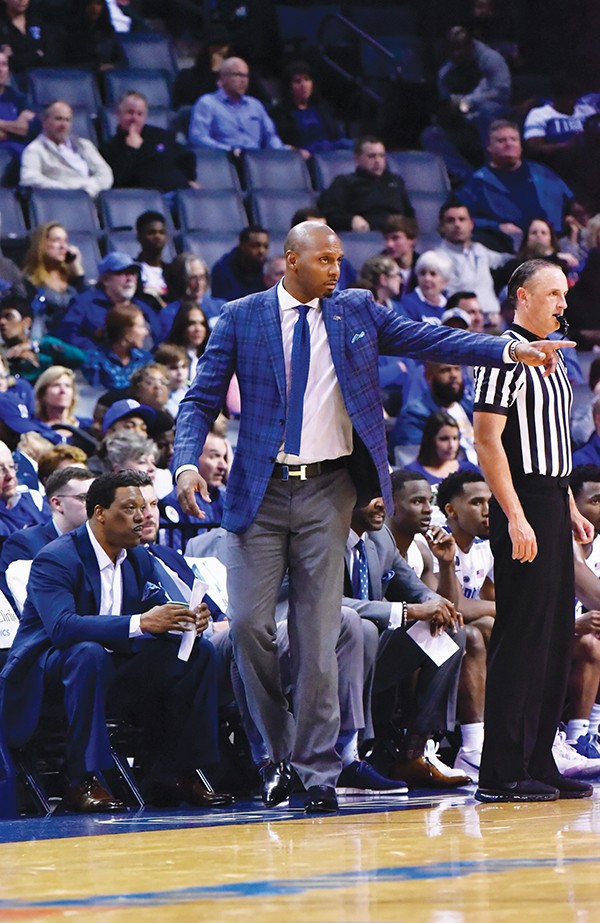 Larry Kuzniewski
Larry Kuzniewski
Coach Penny Hardaway points the way to Tiger victory
Sports
The new year — new decade — in Memphis sports will be unlike any we’ve seen before. Such is the case every year, of course, as the sports world remains among life’s few truly unscripted delights. Perhaps, even without the recently departed James Wiseman, the Tigers will will make a deep NCAA tournament run. Perhaps Ja Morant returns to full health and dribble-drives his way to the NBA’s Rookie of the Year trophy. Perhaps the University of Memphis football team finds a way to top its 2019 season. Okay, let’s be realistic …
Penny Hardaway’s Tigers will regain center stage with conference play, his program seeking a first American Athletic Conference championship. The nation’s top freshman class — prior to Wiseman’s departure — will find its biggest test come tournament time in March. (Memphis hasn’t reached the NCAA tournament since 2014.)
The Ja and Jaren era is upon us with Grizzlies basketball, Mr. Morant and Mr. Jackson having become the faces of a franchise now climbing back toward playoff relevance in a Western Conference top-heavy with superstars, most notably those playing for the two Los Angeles franchises. Still shy of his 21st birthday, Morant could become only the second Grizzly to earn top-rookie honors (and the first since Pau Gasol raised the hardware in 2002).
Spring could bring one of the top prospects in baseball to AutoZone Park. Outfielder Dylan Carlson earned the St. Louis Cardinals’ Minor League Player of the Year honor for 2019, primarily for his performance at Double-A Springfield. The 21-year-old slugger will compete for a spot on the Cardinals’ major-league roster in March but will more than likely fine-tune his swing in Memphis with the Redbirds before making his big-league debut.
901 FC will take the pitch (pardon the pun) at AutoZone Park for its second season in the USL Championship. The Bluff City’s new soccer outfit went 9-18-7 in its first season, making up in fan-base passion what it may have lacked in finishing ability. With the likes of Louisville City FC and Birmingham Legion FC to catch in the standings, regional rivalries are already growing, gas to the fire for the local futbol faithful.
As for football, American style, the Memphis Tigers will have to follow-up on the finest season in program history, one that ended with an American Athletic Conference championship and an appearance in the prestigious Cotton Bowl. A new coach will be on the sideline, Mike Norvell having taken his stellar four-year mark (38-15) to Florida State. Star running back Kenneth Gainwell will return to spark the offense, which suggests winning won’t be a thing of the past at the Liberty Bowl. Since 2014, the Tigers are 35-5 at home.— Frank Murtaugh
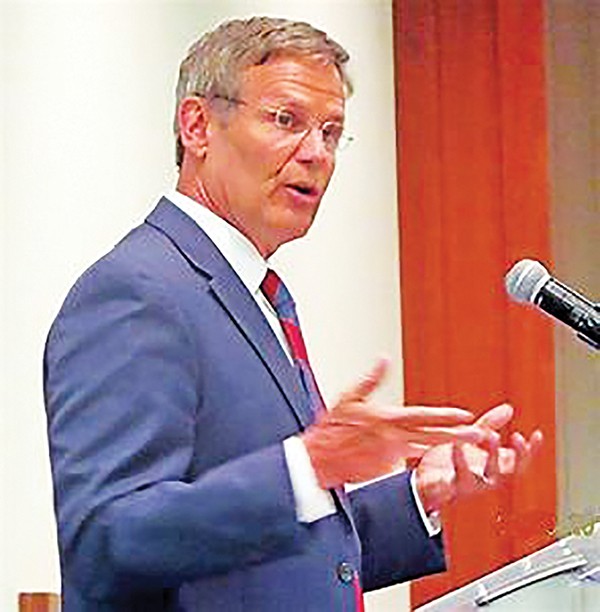 Jackson Baker
Jackson Baker
Bill Lee
Politics
It may well be that, as politics takes its course in 2020, the nation’s currently beleaguered president, Donald J. Trump, will survive a vote of confidence this year, as, locally, Mayor Jim Strickland did at the city polls in 2019 and Governor Bill Lee’s program probably will with the legislature. But advance polling always had Strickland comfortably ahead of his rivals, and a just-concluded Vanderbilt University poll of state voters has given first-termer Lee a 62-percent approval rating. Trump, uniquely, has never been over the 50-percent mark — not even in 2016, when Hillary Clinton actually out-polled him nationally. Trump’s only sure win would seem to be in the GOP-dominated Senate, over the sudden-death matter of impeachment.
And Republican numerical domination, not popular demand nor irresistible logic, will empower the Governor’s prospects in the General Assembly. But not necessarily. It is famously (or infamously) true that Lee’s controversial bill to permit private school vouchers (or “education savings accounts,” in the euphemism of the day) passed by a single vote in the state House and only by means of highly devious wheeling and dealing and overtime arm-twisting on the part of the since-disgraced GOP Speaker Glen Casada, who was later forced into resigning. The new Republican Speaker, Cameron Sexton, is a sworn foe of vouchers and has indicated that, at the very least, he’d like to delay the onset of ESAs, which are due to be imposed (take that, you blue bailiwicks!) only on Shelby and Davidson Counties.
In the long run, Democrats are hoping for a swing of the electoral pendulum that could bring them more of the incremental suburban vote gains that got them close to a couple of major legislative upsets in Shelby County in 2018. The expected large Democratic vote in the presidential election will be helpful in that regard. The timing of vouchers, health care, and the question of freeing up TANF (temporary assistance for needy families) will be on the agenda in Nashville, as will, very likely, the return of the “fetal heartbeat” anti-abortion measure.
A U.S. Senate race will be on the statewide marquee, with primary races in both major parties. The Republican winner will be heavily favored. In city politics, it will be interesting to see if the development community’s hold on the Council will be loosened by the addition of some of the grassroots winners from the October election. In Shelby County politics, Mayor Lee Harris is on again/off again on solidarity with the County Commission. It is universally assumed that he is looking ahead to a future-tense congressional race, but in the meantime he has seemingly (and sensibly) committed himself to some center-left populism focused on wage equity and minority/women-owned business enterprises advances.
Former Shelby County Democratic chairman Corey Strong will meanwhile take a crack at the 9th district Congressional seat now held by long-running Democratic monolith Steve Cohen. — Jackson Baker
Film
No doubt the biggest story in the Memphis film scene for 2020 will be the opening of the new Indie Memphis Cinema. Just before 2019’s annual film festival, Malco Theaters struck a deal with the nonprofit to turn over operation of one of the screens at Studio on the Square in Midtown’s Overton Square.
Malco will be renovating the aging Studio to bring it up to the standards set by Malco Powerhouse (read: new seats and a greatly expanded food and drink program) this winter and spring. Then, Indie Memphis will begin daily showings of the acclaimed films from the festival circuit and repertory offerings that have populated their increasingly popular weekly screenings.
This will be a sea change for film fans in Memphis. The Malco Ridgeway Cinema Grill has built a steady audience with sophisticated, non-blockbuster offerings in East Memphis, but this new arrangement will mark the beginning of a true art house in the Bluff City. The seeds of Indie Memphis were sown in the mid-1990s with an effort to build such a theater in Midtown before morphing into a festival, so this new cinema is the realization of a long-term dream.
2020 will be the year the mainstream industry fully faces Disney’s market dominance. Since the acquisition of 20th Century Fox, the House of Mouse is now set to control almost half of the total global box office. Their slate for 2020 is a mixed bag. In February, Fox Searchlight drops Wendy, a retelling of the Peter Pan story from the heroine’s POV, and 20th will offer an adaption of Call of the Wild with Harrison Ford that looks promising. March begins with Pixar’s urban fantasy Onward and ends with the live-action remake of Mulan, which looks to have slightly more reason to exist than the flaccid Aladdin. In April, Marvel takes a mulligan on the last X-Men film with The New Mutants, then the long-anticipated Black Widow premieres on May Day. Pixar’s second film of the year is Soul in June, a musical by Inside Out director Pete Docter. In the fall, expect Marvel’s The Eternals and Disney Animation’s Raya and the Last Dragon.
Studios not named Disney also have anticipated offerings. Robert Downey Jr. will talk to animals in his first post-Iron Man role as Dr. Doolittle in January, which will go up against Will Smith and Martin Lawrence in the Jerry Bruckheimer-produced Bad Boys for Life. In February, Warner Brothers will again attempt to make a watchable DC comic book movie with the Margo Robbie-led Birds of Prey, and the cringeworthy Sonic the Hedgehog will face a horror adaptation of Fantasy Island from Blumhouse. In March, Paramount will try to replicate a sleeper hit with A Quiet Place Part II. Daniel Craig will strap on the Walther PPK for the last time as James Bond in No Time to Die. June is stacked with the return of Diana Prince in Wonder Woman 1984, Tom Cruise in Top Gun: Maverick, and the Lin-Manuel Miranda-penned musical In the Heights. In July is Ghostbusters: Afterlife, which will reunite the original cast, and the Kristen Wiig road trip comedy Barb and Star Go to Vista Del Mar.
Speaking of reuniting the original cast, in August, Bill and Ted Face the Music brings back Keanu Reeves and Alex Winter as the Wyld Stallyns. Edgar Winter takes a swing at psychological horror with Last Night in Soho. In October, Kenneth Branagh does Death on the Nile, and Jamie Lee Curtis returns for Halloween Kills. The biggest film weekend of the year looks to be the titanic matchup on December 18th, when Dennis Villeneuve’s science-fiction epic Dune, Steven Spielberg’s remake of West Side Story, Columbia’s adaptation of the Uncharted game franchise, and Memphis’ own Craig Brewer directing Eddie Murphy in Coming 2 America battle for box office supremacy. See you at the movies. — Chris McCoy
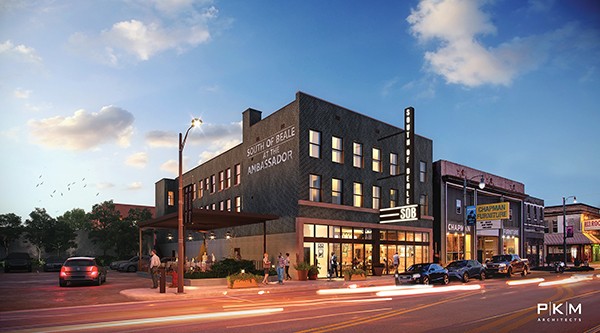 P/K/M Architects
P/K/M Architects
Rendering of the proposed new South of Beale
Food
There’s no doubt that big things are going to happen in 2020, and many of us — myself included — may find ourselves stress-eating or self-medicating with food. With that said, Memphis foodies have a lot to look forward to in the year ahead, including more French food, riverfront views, and even a brand-new brewery. Cheers!
Out east, the fine dining establishment Erling Jensen: The Restaurant will undergo an expansion in early 2020, more than doubling the size of its bar menu and dining room. East Memphis will also welcome a new crab restaurant when The Juicy Crab opens a new location in a 7,200-square-foot space in the Eastgate Shopping Center.
In the suburbs, Slim Chickens plans to open a second location in Collierville in late spring at the corner of Poplar and Maynard Way, and Wing Guru is expanding to new locations in Collierville and Hernando, Mississippi. Their current locations can be found on Mt. Moriah in Memphis and on Stage Road in Bartlett.
Downtown, Memphis’ newest brewery, Soul & Spirits Brewery, will open in the Uptown neighborhood at 845 N. Main. Owned and operated by husband-and-wife team Blair Perry and Ryan Allen, the brewery will likely focus on traditional German-style beers “inspired by the diverse music culture of Memphis” (per their Facebook page).
South of Beale, Memphis’ first gastropub, will move to a new location. The new venue, located on the first floor of the old Ambassador building, will open in the spring at 345 S. Main.
Memphis chefs Michael Hudman and Andy Ticer will bring a taste of Europe Downtown when Bishop, in the Central Station Hotel, has its grand opening in January. After a soft launch in December, the French restaurant will be fully open in January serving breakfast, lunch, and dinner.
Also Downtown, One Beale finally broke ground in 2019 and has a projected completion date in 2020. Besides apartments and hotels, the massive development project will include a new riverfront restaurant and a rooftop whiskey bar with indoor and outdoor seating.
As that project comes closer to completion, another project will begin: Construction on Union Row is projected to start in 2020, and the plans include a few new restaurants and a hotel overlooking AutoZone Park.
In keeping with the Downtown hotel boom, Memphis’ first Aloft Hotel will also open at 161 Jefferson in the summer of 2020. The hotel will include a full-service restaurant and the brand’s signature WXYZ bar. — Lorna Field
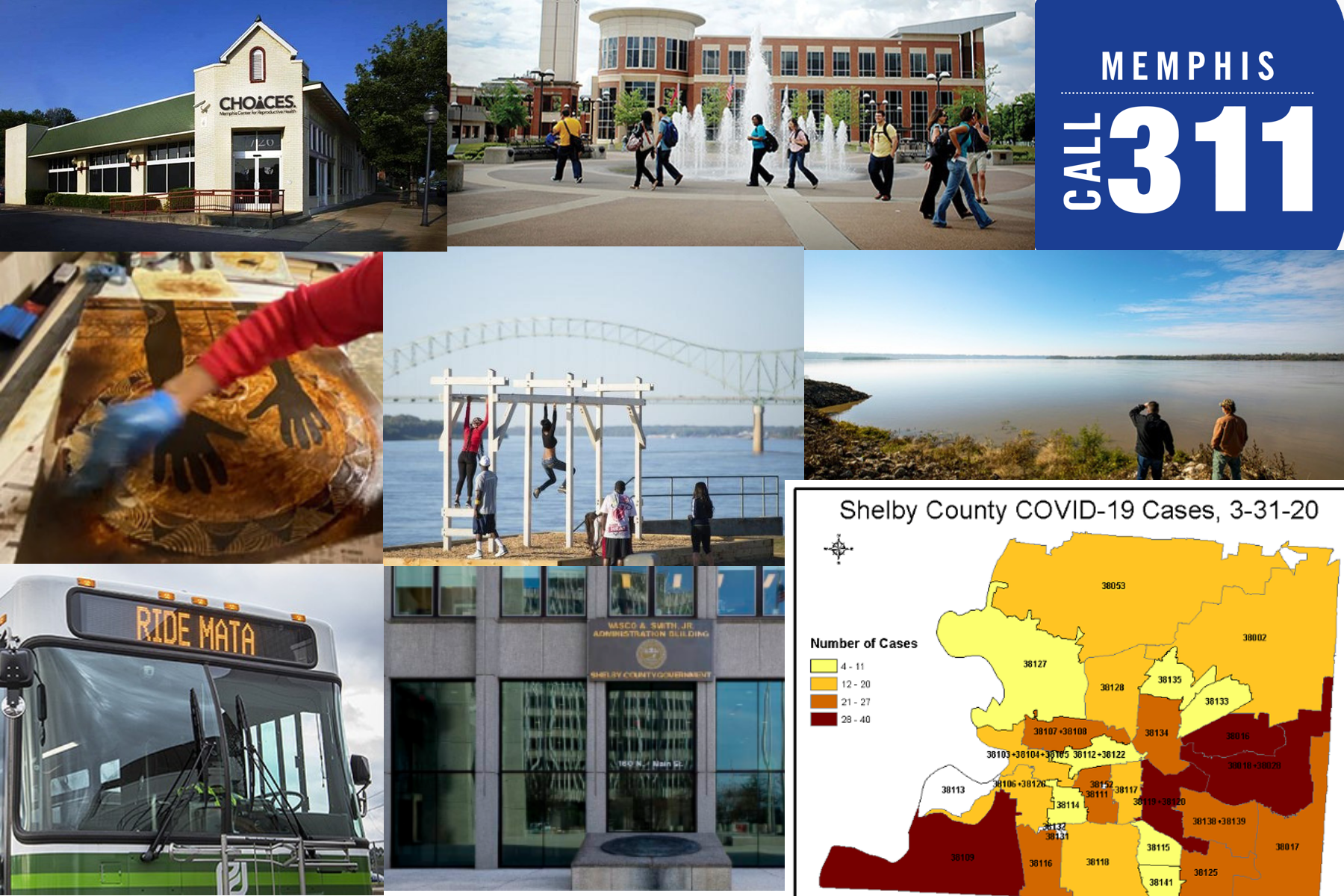
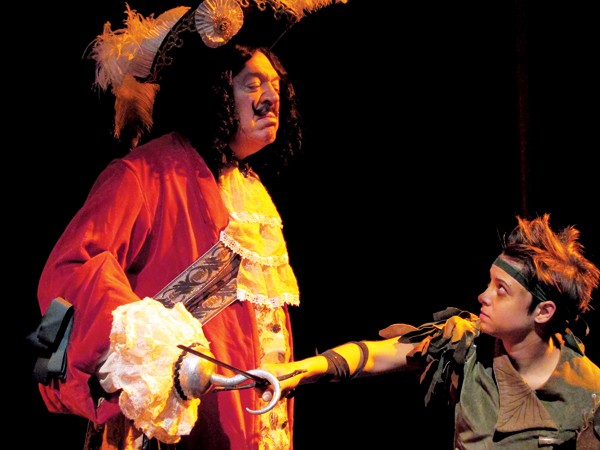
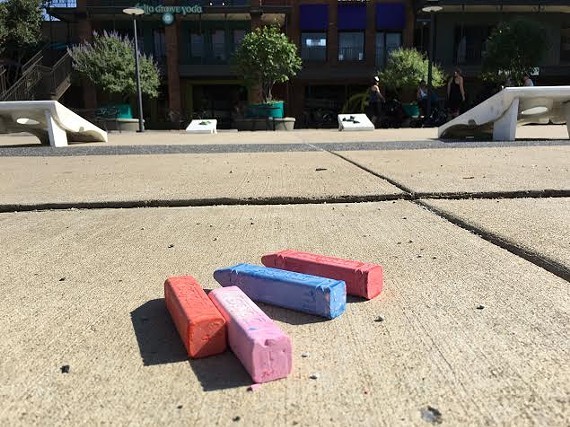
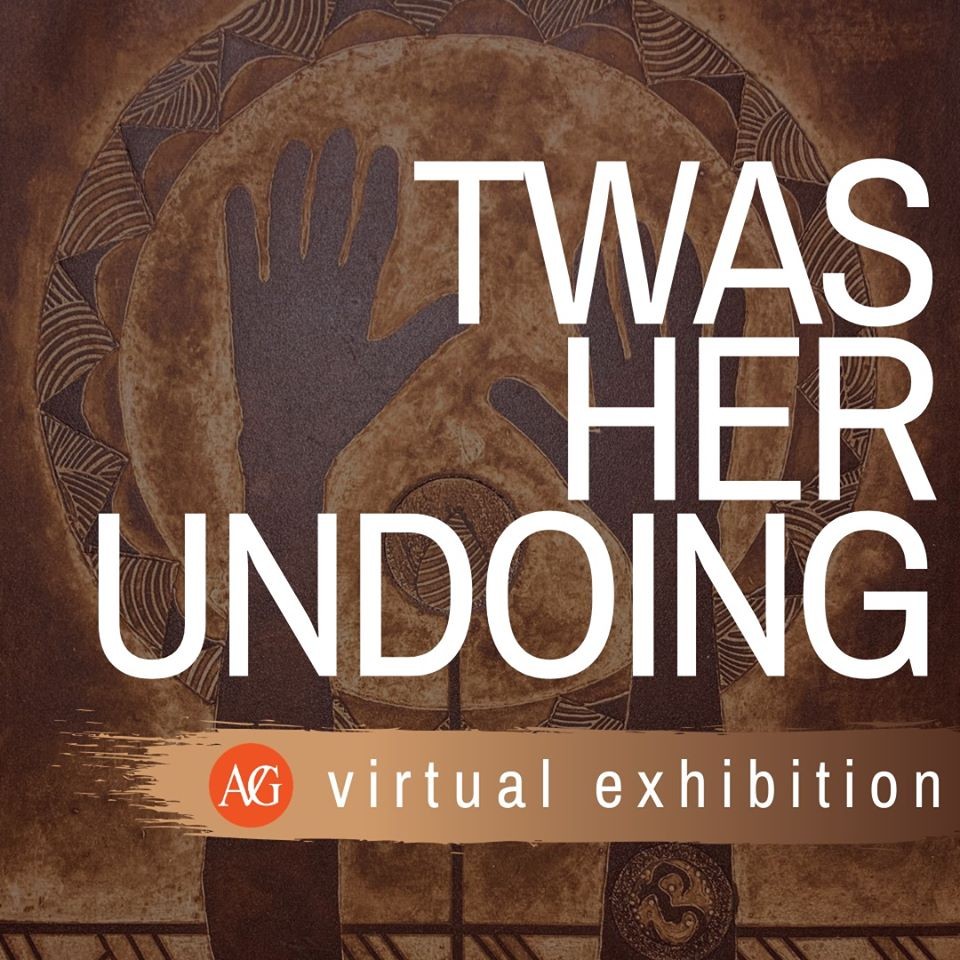


 Marc Pegan
Marc Pegan  Piper Ferguso
Piper Ferguso 
 Larry Kuzniewski
Larry Kuzniewski  Jackson Baker
Jackson Baker  P/K/M Architects
P/K/M Architects 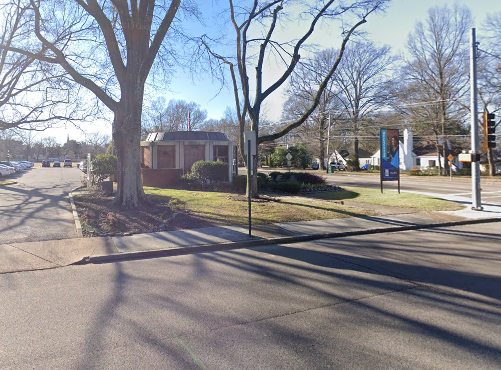 Google Maps
Google Maps 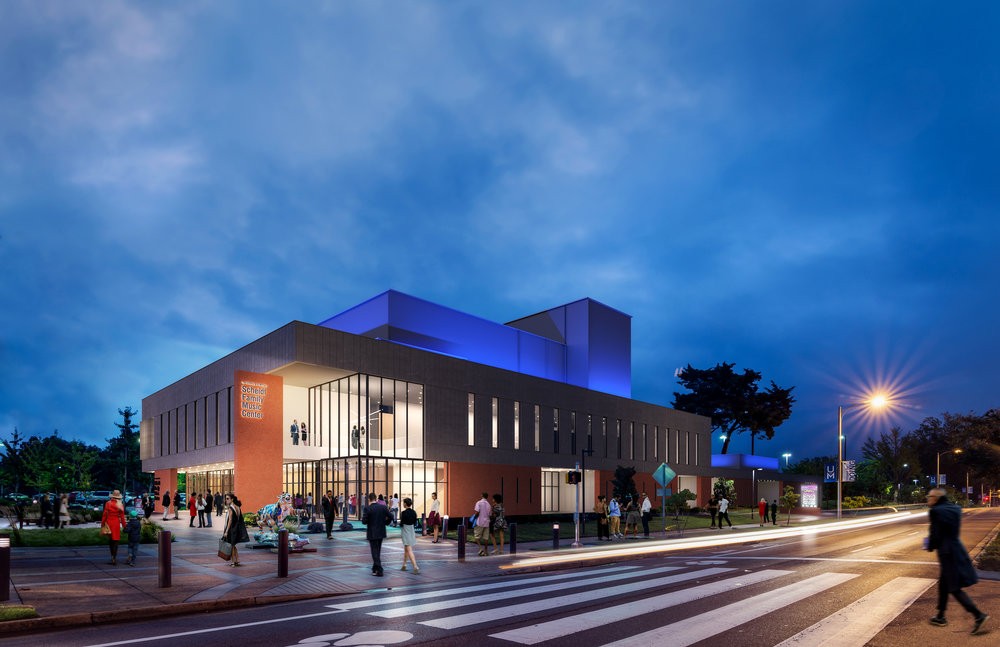 archimania
archimania 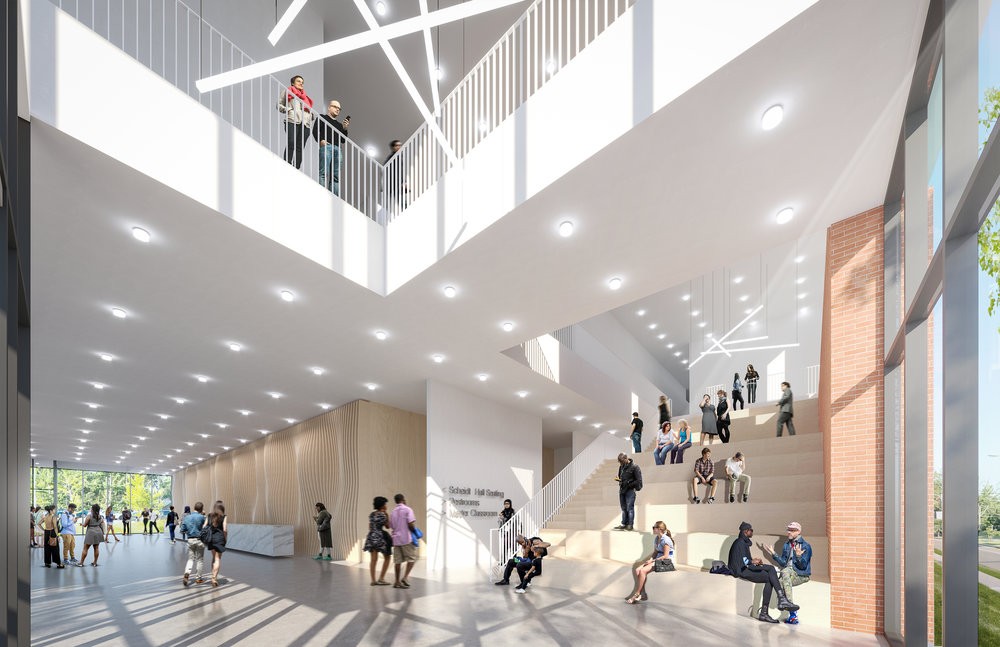 archimania
archimania 